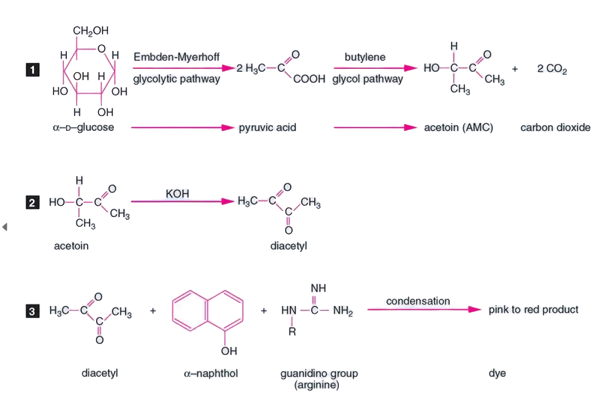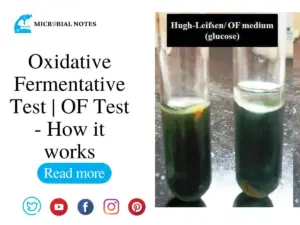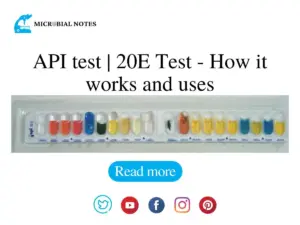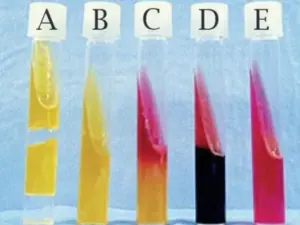Introduction
The (VP) Voges Proskauer test is a biochemical assay that is commonly used in microbiology to detect the production of acetoin by bacteria. The test is named after two microbiologists, Bernhard Voges and Victor Proskauer, who first described the procedure in 1898. The Voges-Proskauer test is an important tool in identifying different bacterial species and strains based on their metabolic capabilities.
Purpose of VP
The purpose of the Voges-Proskauer test is to identify bacteria that are capable of fermenting glucose and producing acetoin. Bacteria that produce acetoin can be differentiated from those that do not, based on the presence or absence of a color change that occurs after adding specific reagents to the culture. The test is particularly useful in identifying members of the Enterobacteriaceae family, which is a group of Gram-negative bacteria that inhabit the gastrointestinal tract of humans and animals.
Significance
The significance of the Voges-Proskauer test in microbiology is that it provides a quick and relatively easy way to identify different bacterial species based on their metabolic pathways. This is particularly important in clinical microbiology, where the identification of pathogenic bacteria is crucial for the diagnosis and treatment of infectious diseases. The Voges-Proskauer test is often used in conjunction with other biochemical assays and molecular techniques to confirm the identity of bacterial isolates.
Principle of VP test
The Voges-Proskauer test is a biochemical assay that is used to detect the production of acetoin by bacteria. The test is based on the ability of certain bacteria to ferment glucose and produce the intermediate metabolite, 2,3-butanediol, which is subsequently converted to acetoin by an oxidative reaction. The acetoin is then detected by the addition of alpha-naphthol and potassium hydroxide to the bacterial culture, which results in a color change.
Production of acetoin
The first step in the Voges-Proskauer test is the fermentation and metabolism of glucose by the bacterial culture being tested. Glucose is an important source of energy for many bacterial species, and its metabolism leads to the production of Pyruvic acid with the help of the Embden Myerhoff glycolytic pathway.
The next step in the Voges-Proskauer test is the conversion of Pyruvic acid to acetoin and CO2. This conversion is catalyzed by the butylene glycol pathway.
Chemical reaction and resulting color change
The final step in the Voges-Proskauer test is the detection of acetoin(acetylmethylcarbinol) by the addition of alpha-naphthol and potassium hydroxide to the bacterial culture. The KOH reacts with the acetoin to form diacetyl, which is subsequently reacted by the ɑ-naphthol to produce a pink to red color. The intensity of the color is directly proportional to the amount of acetoin present in the bacterial culture.

The chemical reaction underlying the Voges-Proskauer test is therefore the reaction between alpha-naphthol and acetoin in the presence of potassium hydroxide. The resulting color change is due to the formation of a pink to red complex, which is indicative of the presence of acetoin. The test is considered positive if the color change occurs within a specific time frame and is of sufficient intensity.
Reagents required
List of necessary reagents:
- Glucose broth
- VP reagent A (alpha-naphthol solution)
- VP reagent B (potassium hydroxide solution)
Purpose of each reagent
Glucose broth: Glucose broth is a type of nutrient broth that contains glucose as the carbon source. It is used to culture the microorganism being tested and to provide a source of glucose for metabolism.
VP reagent A (alpha-naphthol solution): VP reagent A is a solution of alpha-naphthol in absolute ethanol. It is used to react with acetoin, producing a diacetyl compound which will then react with VP reagent B to produce a red color. VP reagent A serves as a catalyst in the reaction and enhances the sensitivity of the VP Test.
VP reagent B (potassium hydroxide solution): VP reagent B is a solution of 40% potassium hydroxide in water. It is used to react with the diacetyl compound produced by the reaction between VP reagent A and acetoin. This reaction results in the formation of a red color, indicating a positive result for acetoin production.
Preparation of reagents
Glucose broth: Glucose broth can be purchased as a pre-made powder that can be reconstituted with water. Alternatively, it can be made by dissolving 10 g of beef extract, 10 g of peptone, and 1 g of glucose in 1 L of distilled water. The solution should be sterilized by autoclaving.
VP reagent A (alpha-naphthol solution): VP reagent A can be prepared by dissolving 5 g of alpha-naphthol in 100 mL of absolute ethanol. The solution should be stored in a brown glass bottle to protect it from light.
VP reagent B (potassium hydroxide solution): VP reagent B can be prepared by dissolving 40 g of potassium hydroxide in 100 mL of distilled water. The solution should be stored in a dark bottle to protect it from light.
It is important to note that the VP reagents should be prepared fresh before use and should be stored properly to prevent contamination and degradation. Additionally, care should be taken when handling the reagents, as they may be harmful if ingested or inhaled.
Procedure
- Prepare two tubes of glucose broth, inoculating each tube with a loopful of the pure bacterial culture
- Label one tube as the VP test tube and the other tube as the control tube.
- Incubate the two tubes at 37 °C temperature for 24 hours to allow bacterial growth and metabolism.
- The VP Test tube and the control tube should both be incubated for the same amount of time.
- After incubation, add 5-10 drops of VP reagent A (alpha-naphthol solution) to the VP Test tube.
- Mix the contents of the tube by shaking gently.
- Add 5-10 drops of VP reagent B (potassium hydroxide solution) to the VP Test tube.
- Mix the contents of the tube by shaking gently.
Interpretation of VP Test Results:
Positive Result
A positive VP test result is indicated by a red color in the media after the addition of reagents. The presence of a red color indicates that acetoin has been produced by the microorganism being tested.
Negative Result
A negative VP test result is indicated by the absence of a red color in the media after the addition of reagents. A negative result indicates that the microorganism being tested is unable to produce acetoin.
Types of organisms tested with the VP Test
| Organism | Gram stain | Habitat | VP Test Result |
| Escherichia coli | Negative | Intestinal tract of humans and animals | Positive |
| Klebsiella pneumoniae | Negative | Human respiratory tract, soil | Positive |
| Enterobacter aerogenes | Negative | Soil, water | Positive |
| Citrobacter freundii | Negative | Soil, water | Positive |
| Serratia marcescens | Negative | Soil, water | Positive |
| Staphylococcus aureus | Positive | Skin, nasal passages | Positive |
| Bacillus subtilis | Positive | Soil, vegetation | Positive |
Advantages of the VP Test
Cost-effective: The VP Test is relatively inexpensive compared to other bacterial identification tests.
Simple procedure: The VP Test is a simple test to perform, with relatively few steps required.
High specificity: The VP Test is highly specific for acetoin production, making it useful in differentiating between closely related bacterial species.
Limitations of the VP Test:
- The VP Test may give false-negative results if the bacterial culture is not in the proper growth phase, or if the bacterial strain does not produce acetoin.
- The VP Test may not detect low levels of acetoin production, which could result in false-negative results.
- Read the test within 1 to 2 hours. Otherwise, reagents react with each other and give false interpretations
- The VP Test is only useful for detecting acetoin production and is not suitable for detecting other bacterial metabolites.
Comparison to alternative tests:
Methyl Red (MR) Test: The MR Test is another bacterial identification test that detects the production of organic acids. While the MR Test can be used to differentiate between some bacterial species that the VP Test cannot, it is less specific for acetoin production.
Citrate Test: The Citrate Test is another bacterial identification test that detects the ability of bacteria to use citrate as a carbon source. While the Citrate Test can be useful for identifying certain bacterial species that the VP Test cannot, it does not detect acetoin production.
Biolog Microbial Identification System: The Biolog System is a commercial bacterial identification system that uses a panel of tests to identify bacterial species. While the Biolog System is more comprehensive than the VP Test, it is also more expensive and requires specialized equipment.
Conclusion
In conclusion, the VP test is a biochemical test that is commonly used to detect the ability of microorganisms to produce acetoin via the 2,3-butanediol fermentation pathway. The test involves a series of steps, including preparation of the bacterial culture, inoculation of media, incubation, the addition of reagents, and interpretation of results.
References
https://en.wikipedia.org/wiki/Voges%E2%80%93Proskauer_test
Clinical Microbiology Procedures Handbook, Fourth Edition. (2016). In Clinical Microbiology Procedures Handbook, Fourth Edition. American Society of Microbiology. https://doi.org/10.1128/9781555818814
Procop, G. W., Church, D. L., & Koneman, E. W. (2020). Koneman’s Color Atlas and Textbook of Diagnostic Microbiology. Jones & Bartlett Learning.







